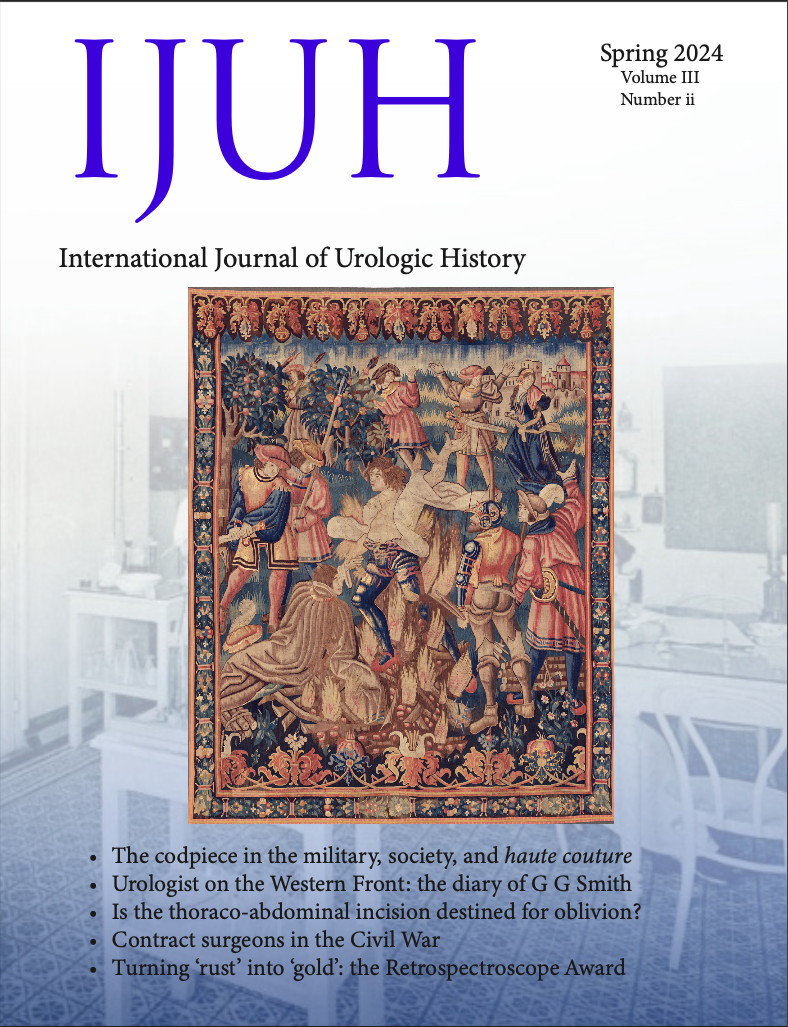IJUH
International Journal of Urologic History
A Critical Picture of Racism, Trophy Taking, and Forensics: Life Magazine May 22, 1944 “Picture of the Week”
Benjamin L. Coiner, Ronald Rabinowitz, Meghan E. Kapp, Jennifer B. Gordetsky
First Published: July 1, 2022
DOI: 10.53101/IJUH.2.1.752203
Download PDF
Abstract
Objectives
The 2020 American Urological Association (AUA) Retrospectroscope Award winning presentation investigated the history of war trophies. Included was Life magazine’s May 22, 1944 “Picture of the Week” showing a young American woman gazing at a skull sent by her boyfriend serving in the Pacific theater of WWII. The caption claimed the skull was from a Japanese soldier “picked up on a New Guinea beach.” The displaying of human remains so casually in a magazine brings up the ethical considerations behind how we use human remains in medicine, art, museums, and collections. Identification and interpretation of bony characteristics and injuries from skeletonized human remains can help demystify medical history, reconstruct battles, and bring identity back to the faceless. We investigated what forensic and paleopathology techniques can tell us about battlefield human remains including the Life skull.
Methods
We reviewed the literature for information about the Life skull and characterization of physical traits and traumatic injuries that can be assessed from skeletal remains.
Results
Taking ‘trophies’ from human remains has occurred throughout human history. Anatomical trophy taking by US troops in the Pacific during WWII was fueled by rampant jingoism and anti-Asian racism of the time. Battlefield methods to remove soft tissue from bone included boiling, skinning, scrubbing, lye, and ants. Similar techniques are used by modern medical examiners. The tropical Pacific climate and lack of burial would have hastened natural decomposition of a fallen soldier. The bony pelvis and the skull are the two most useful parts of the skeleton for assessment of human remains. The pelvis is the most reliable bone in the human body for determining sex, followed by the skull. The pelvis and skull also aid in the determination of age at death. Estimation of likely ancestry primarily relies on the skull but is a challenging and increasingly controversial practice. Skeletal remains may show evidence of trauma to the pelvis and skull, providing clues as to cause of death. Pelvic injuries are associated with high rates of mortality from hemorrhage and disruption of the genitourinary system, and evidence of genital mutilation may be present. Forensic methods suggest the Life skull is consistent with male sex. Ancestry, age at death and age of the remains are unable to be determined from the photo. Publication of the Life skull led to public disapproval and an Army memorandum condemning the practice of taking enemy remains.
Conclusions
The pelvis and the skull provide useful, objective evidence when studying victims of past wars. Accurate determination of age at death, sex, and likely ancestry may be established from skeletal remains. Forensic methods and paleopathology can help restore the humanity lost by the faceless victims of war.
Editor in Chief: John L. Phillips, MD
Journal Design: Akhil A. Saji, MD
DOI: 10.53101
US ISSN: 2769-2183
